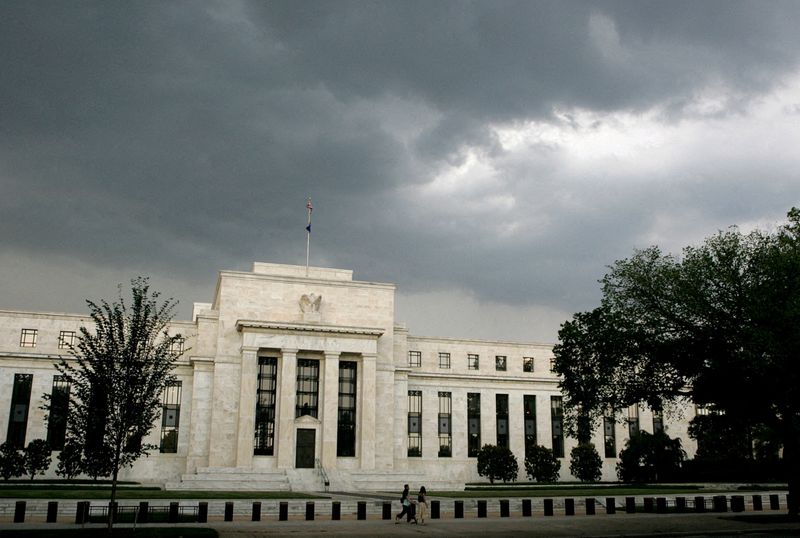Fed announces reduction in balance sheet runoff pace
2024.05.01 15:26

By Michael S. Derby
(Reuters) – The Federal Reserve announced plans on Wednesday to slow the speed of its balance sheet drawdown, after having spent much of the earlier part of the year warning of this shift.
The Fed said that starting on June 1 it was reducing the cap on Treasury securities it allows to mature and not be replaced to $25 billion from its current cap of up to $60 billion per month. The Fed left the cap on how many mortgage-backed securities it will allow to roll off its books at $35 billion per month, and it will reinvest any excess MBS principal payments into Treasuries.
The move was announced at the end of its two-day Federal Open Market Committee meeting, at which the U.S. central bank left interest rates unchanged.
The downshift in the pace of the runoff had been widely expected, although market participants weren’t sure whether the tapering of the runoff process would happen at this week’s FOMC gathering or the one scheduled for June.
Fed officials have been making the case that by moderating the drawdown pace they reduce the risk of unwanted market disruptions of the sort that occurred when they last shrunk their balance sheet. They’ve also noted that by slowing the pace of balance sheet contraction, it may allow them to reduce the overall size of their holdings by a greater degree.
After doubling the size of the balance sheet to about $9 trillion from its pre-pandemic size, the Fed has been allowing some of its holdings of Treasuries and mortgage-backed bonds to expire. That process, started in the latter half of 2022, has seen the Fed’s balance sheet fall to $7.5 trillion.
3rd party Ad. Not an offer or recommendation by Investing.com. See disclosure here or
remove ads
.
The balance sheet drawdown, referred to as quantitative tightening, or QT, runs separately from the changes in central bank interest rate policy. That said, rate rises and QT were both part of the process of rolling back the stimulus provided by the Fed due to the economic impact of the coronavirus pandemic. QT is aimed at reducing excessive liquidity in the financial system to a level that will still allow normal money market volatility and afford the Fed control over the federal funds rate.
The Fed has yet to give any target for where it would like its balance sheet to stand when it is done with QT. A report last month from the New York Fed said that market demand for liquidity will be the key driver of the QT endgame, with the runoff likely finishing up some time in 2025, with Fed holdings potentially somewhere between $6 trillion and $6.5 trillion.








